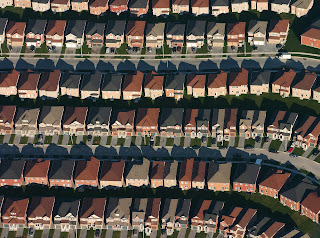What typology (continuum, flow chart, et. cetera) would you create that encompasses all types of action?
In Imagined Economies: The Sources of Russian Regionalism, Yoshiko M. Herrera writes about autonomy and sovereignty movements that emerged in the Russian Federation after Soviet rule. The introduction of this book presents us in the post-communism government as the Russian Federation is being shaped to form the new authority. Divergent economic interests between regions seemed to play a significant role in these movements despite many of the regions having remarkably similar economies. It is clear that the removal of central authority here (communism) caused a rush to fill the emergent gap that the regions in Russia sought to fill.
It is clear that the regions in the Russian Federation had significant differences regarding their beliefs on autonomy, sovereignty, and economics. The struggle for regional power and representation might be due in part to the complicated mechanisms under which the Federation was divided. In order to voice their concerns and beliefs, these regions had to engage in action.
The sovereignty and autonomy movements of regions in Russia did not emerge as completely new sentiments with the fall of communism. It is clear that these movements are based, at least in part, due to existing sentiments and concerns. When thinking of typologies that could encompass all types of action, I think this scenario shows a continual momentum towards action. An eventual movement stemming from the accumulation of opinions and concerns over time is, in my opinion, the most common form of action.
Rarely does action emerge all of a sudden without any preliminary thought or signifiers. Usually, there are foreshadowing opinions even when movements spring up seemingly all of a sudden in response to a significant event. While specific events such as an egregious violation of one's rights may spur action, I think it is most common that there was some dialogue preceding the event. For example, school shootings have spurred worldwide movements against gun violence. These movements are quickly linked, however, to broader narratives about gun violence in the United States. This makes them connected to a more extensive dialogue outside of the event itself.
The topography of action is often one of the growing momenta towards increasing saliency. This being said, some movements may not ever achieve recognition and representation. This topography of these movements may vary even more significantly over time.
Herrera, Yoshiko. 2005. Imagined Economies: The
Sources of Russian Regionalism.
Cambridge: Cambridge University Press.
van Zomeren, Martijn, Tom Postmes, and Russell Spears. 2008. “Toward an Integrative Social Identity Model of Collective Action: Quantitative Research Synthesis of Three Socio-
Psychological Perspectives.” Psychological Bulletin 134(4): 504-535.



It is definitely true that most extreme action has previously gone through a bunch of prior steps before becoming extreme, so this type of continuum between contacting representatives and protest and separatism and civil war might make sense. But your article is about a critical event. Can critical events escalate the type or severity of action along this continuum in order to skip a bunch of the middle steps? That is, can you go from protests to civil war without regional autonomy, for example? If something like this is possible, critical events are typically how this occurs.
ReplyDeleteI agree that most major actions have been simmering just below the surface for months or years in most cases. When they seem to break through out of nowhere, it is often because of a critical event, like William said, but also because the foundation had been built over months or years by people dedicated to an issue, and/or by a series of actions. As with many things in this class, the recent Black Lives Matter protests are a clear embodiment of the political science literature at work. Police have disproportionately killed/murdered black people for many years, and it has been a known issue for many years, but the critical event (the recorded murder of George Floyd) lit the fireworks, so to speak, and elevated the movement to become the central issue in American life for weeks on end (except for maybe COVID), with the eyes of the nation on the issue as millions of people took to the streets.
ReplyDeleteI appreciated your final thoughts which describe the motivations behind action. I agree that preliminary thought and signifiers precede action in almost all cases. Despite that reality, many people find actions to be careless or thoughtless. I wonder if there is a typology which could demonstrate how actions are perceived by the actor and the action's witnesses. Thanks for your work.
ReplyDelete